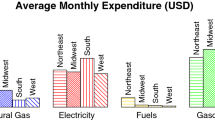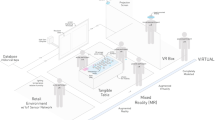Abstract
The positive association between energy used and social complexity proposed by Leslie White and his students is examined at the microsociological level of the household. The hypothesis is tested within matrifocal households supported either by welfare or by the mother's earnings. White's macrosociological proposition is found to be conditional on other cultural, social organizational factors. Household energy consumption rises to the extent that the family establishes ties with outside social organizations, with an increase in the tempo of household activity, and, pari passu,with the expressiveness of the personality of the female household head. Energy consumption is a way of coping with the effects of reduced social organizational and personality order. These social factors interact with demographic and technological factors in determining a social organization's level of energy consumption. By considering the institutional, organizational, and motivational measures suggested in this paper, the unreliability of energy use predictions may be reduced.
Similar content being viewed by others
References
Adams, R. N. (1975).Energy and Structure. University of Texas, Austin.
Berman, M. B., and Hammer, M. J. (1973). The impact of electricity price increases on income groups: A case study of Los Angeles. Report prepared for the California State Assembly with support from the National Science Foundation. The Rand Corporation, Santa Monica, California, March.
Darmstadter, J. (1972). Energy consumption: Trends and patterns. In Schurr, S. H. (ed.),Energy, Economic Growth and the Environment. The Johns Hopkins Press, Baltimore.
Durkheim, E. (1933).The Division of Labor in Society (translated by George Simpson, Jr.). The Free Press, Glencoe, Ill. (Original, 1893).
Durkheim, E. (1951).Suicide (translated by John A. Spaulding and Geroge Simpson, Jr.). The Free Press, Glencoe, Ill. (Original, 1897).
Inter-Technology Corporation. (1971). Energy Flow. Appendix F.The U.S. Energy Problem. Volume II, Part A. Prepared for the National Science Foundation Program on Research Applied to National Needs, Warrenston, Virginia, November.
Klausner, S. Z. (1972). The work incentive program: Making adults economically independent. Final report prepared for Office of Research and Development, Manpower Administration, U.S. Department of Labor, Contract 51-40-69-01.
Klausner, S. Z. (1975). Energy rationing and energy conservation: Foundations for a social policy.Energy Systems and Policy I(2): 119–141.
Klausner, S. Z. (1977a). Energy shortages and the poor. Appendix B, Poverty, transportation and energy. InPapers on Matrifocality and Economy, Final report. Submitted to the U.S. Department of Labor, Manpower Administration under Grant 51-42-73-05/21-42-74-31.
Klausner, S. Z. (1977b). Energy and the structuring of society: Methodological issues. In Altaian, I., and Wohlwill, J. R. (eds.),Human Behavior and Environment: Advances in Theory and Research. Plenum, New York.
Klausner, S. Z., and Edelstein, R. H. (1977).Modelling Society and Energy: Theory and Method in Assessing the Social Effects of Energy Policies. The Center for Research on the Acts of Man, Philadelphia, February.
Klausner, S. Z., Masnick, G. S., and Santo, Y. (1977). Thinking sociologically about transportation and society. A report submitted to the Committee on Transportation, Assembly or Engineering, National Research Council, February.
Newman, D. and Day, D. (1975).The American Energy Consumer. Ballinger, Cambridge, Massachusetts.
Rappaport, R. A. (1974). Energy and the structure of adaptation. Paper presented at the Annual Meeting of the American Association for the Advancement of Science, San Francisco, California, February 26.
Schurr, S. H. (ed.). (1972).Energy, Economie Growth and the Environment. The Johns Hopkins Press, Baltimore.
Starr, C. (1971). Energy and power.Scientific American 224: 36–49.
U.S. Department of Commerce (1972). Bureau of the Census. Households and families by type, March 1972.Current Population Reports: Population Characteristics. Series P-20, No. 237. U.S. Government Printing Office, Washinghton, D.C., July.
Weiss, B. (1974). The energetics of cultural maladaptation. Paper presented at the Annual Meeting of the American Association for the Advancement of Science, San Francisco, California, February 26.
White, L. A. (1959).Evolution of Culture. McGraw-Hill, New York.
Author information
Authors and Affiliations
Additional information
This is part of a larger study of “Paternal Authority and the Outcome of Work Training and Income Maintenance Programs” supported by the Grant 51-42-73-05/21-42-74-31 by the Employment and Training Administration of the U.S. Department of Labor to the Center for Research on the Acts of Man, Philadelphia. The author, not the Department, is responsible for the assertions herein. For assistance in the preparation of these materials the author is indebted to Albert J. Kostelny, Jr., Joseph R. Piasecki, the Institute for Survey Research at Temple University, and the Energy Center of the University of Pennsylvania.
Rights and permissions
About this article
Cite this article
Klausner, S.Z. Social order and energy consumption in matrifocal households. Hum Ecol 7, 21–39 (1979). https://doi.org/10.1007/BF00889350
Issue Date:
DOI: https://doi.org/10.1007/BF00889350




